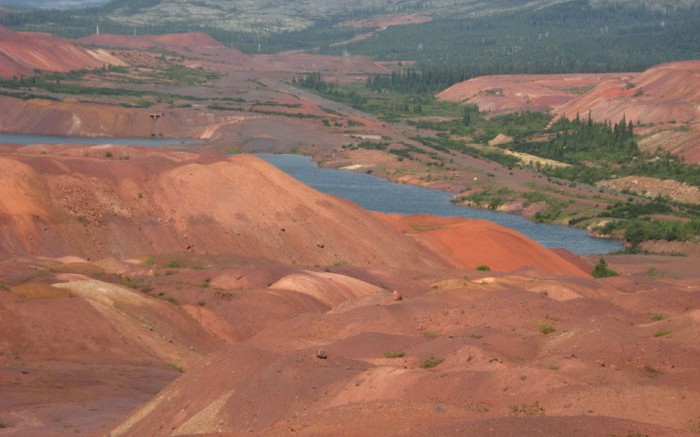VANCOUVER — Goldman Sachs has cut its iron ore price forecasts and downgraded its Rio Tinto (RIO-N, RIO-L) recommendation from “neutral” to “sell.” The reason? More than 90% of the company’s 2012 earnings came from iron ore, a sector Goldman is none too keen about over the coming years.
Goldman’s number crunchers are not alone in predicting a bearish few years for iron ore. In a widely cited report, Deutsche Bank figures almost 100 million tonnes of new iron ore supply will come online in the second half of the year, driven by a raft of almost-complete mine expansions in Australia. These expansions will help increase Australian iron ore exports by 12% to 554 million tonnes by year-end. Over the next five years, exports are forecast to continue climbing 8% annually, which means the country will be exporting 831 million tonnes annually by 2018.
If all this comes to pass, it will translate into a 68% increase in just six years. At the same time, many analysts are arguing that Chinese iron ore demand is about to fall because of slowing growth, a growing scrap-steel market and increased domestic output.
China is expected to keep producing steel apace, but the Asian giant needs less imported iron ore to produce each tonne of steel with each passing year, because two alternatives are surfacing: recycled steel and domestic iron ore production. Recycling alone is expected to eliminate 130 million tonnes of annual iron ore demand by 2020, with secondary steel accounting for 19% of China’s steel output. That’s up from just 12% last year.
Even Rio Tinto agrees that prices for its primary product will likely fall. Greg Lilleyman, the head of Rio’s Pilbara iron ore operations, said in a recent speech that Rio realizes that weakening iron ore demand in China and rising global supply could weigh on iron ore prices in the second half of 2013.
Prices have already fallen notably in the last month. The decline is working to erase the recovery that saw benchmark 62% iron ore fines from Western Australia climb from below US$80 per tonne in September to touch US$150 per tonne in February. This marked a 90% price increase over five months, but by the third week of March that price had fallen back 17% in a month to sit near US$125 per tonne.
Forecasts from here differ in details, but most point downwards. Goldman cut its iron ore price forecast by 11%. Now, the bank predicts prices to peak at US$139 per tonne and decline to just US$80 per tonne over the next two years. Morgan Stanley predicts that prices have peaked already for the year and will decline over the next nine months at least, while the Australian Bureau of Resources and Energy Economics expects prices will average US$119 per tonne over the year.
A month of declining prices, a gloomy price outlook and an unconvinced market have been unkind to iron ore company share prices this year. Since the start of 2013 Rio Tinto shares have lost 19%. Brazil’s Vale (VALE-N), the biggest iron ore producer in the world, is also off 19%. Meanwhile, BHP Billiton (BHP-N) is down 15% and Cliffs Natural Resources (CLF-N) has plummeted 47%.
These numbers aren’t great, but if the bears hovering over the iron ore market have it right, things will get worse from here.
Most of the world’s biggest iron ore companies face the same problem: a lack of free cash flow. Multi-billion dollar capital spending commitments had constrained cash flows even before iron ore prices declined. If prices fall further, these majors will see even less money flowing in.
They will not, however, be able to cut back much on spending, as many of their capital commitments are binding. Rio, for example, is committed to spending at least US$13 billion this year, and will spend more if it approves a second expansion at Oyu Tolgoi in Mongolia, or gives a nod to the South of Embley project in Australia.
This lack of free cash flow juxtaposed against major miners’ endless quests for growth was one of the key concerns Goldman noted in its Rio Tinto downgrade. The bank says it “sees significant earning declines if the company goes ahead with the Pilbara 360 project in a declining iron ore price environment.” Rio is working through an expansion at its Pilbara operations with the goal of increasing output to 290 million tonnes per year by October.
The gloom emanating from iron ore is getting so thick that a company doesn’t even have to be in the market to feel the sector’s downward pull. Teck Resources (TCK-T, TCK-N) has no exposure to the commodity, but in February CEO Donald Lindsay acknowledged that the company is assessing iron ore acquisition options. This prompted rampant speculation that Teck would bid for Rio’s stake in the Iron Ore Company of Canada. The idea that Teck might move into iron ore, coupled with news of Goldman’s iron ore outlook downgrade, pushed Teck shares down 5%.


Be the first to comment on "Iron ore outlooks turn gloomy"